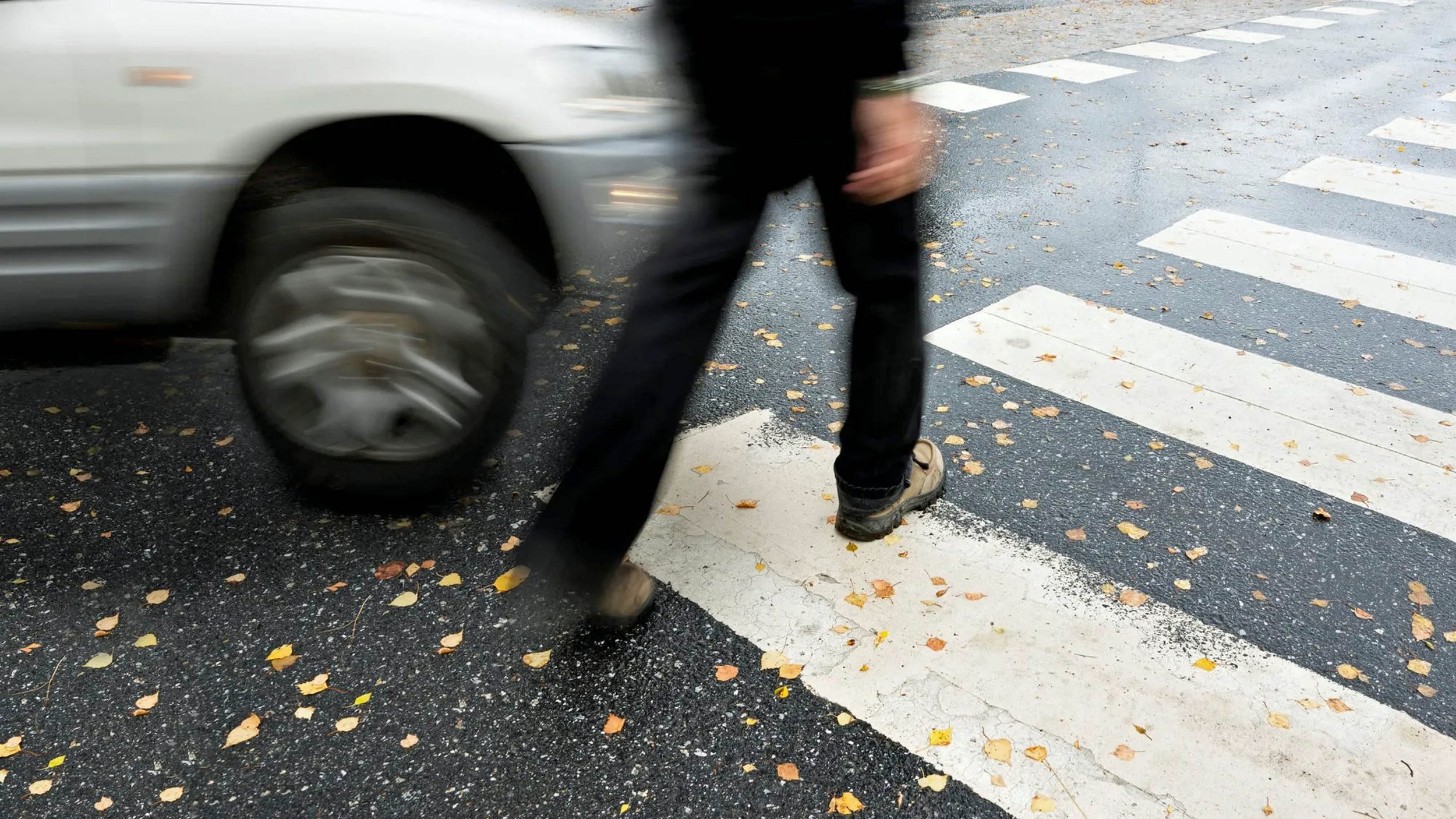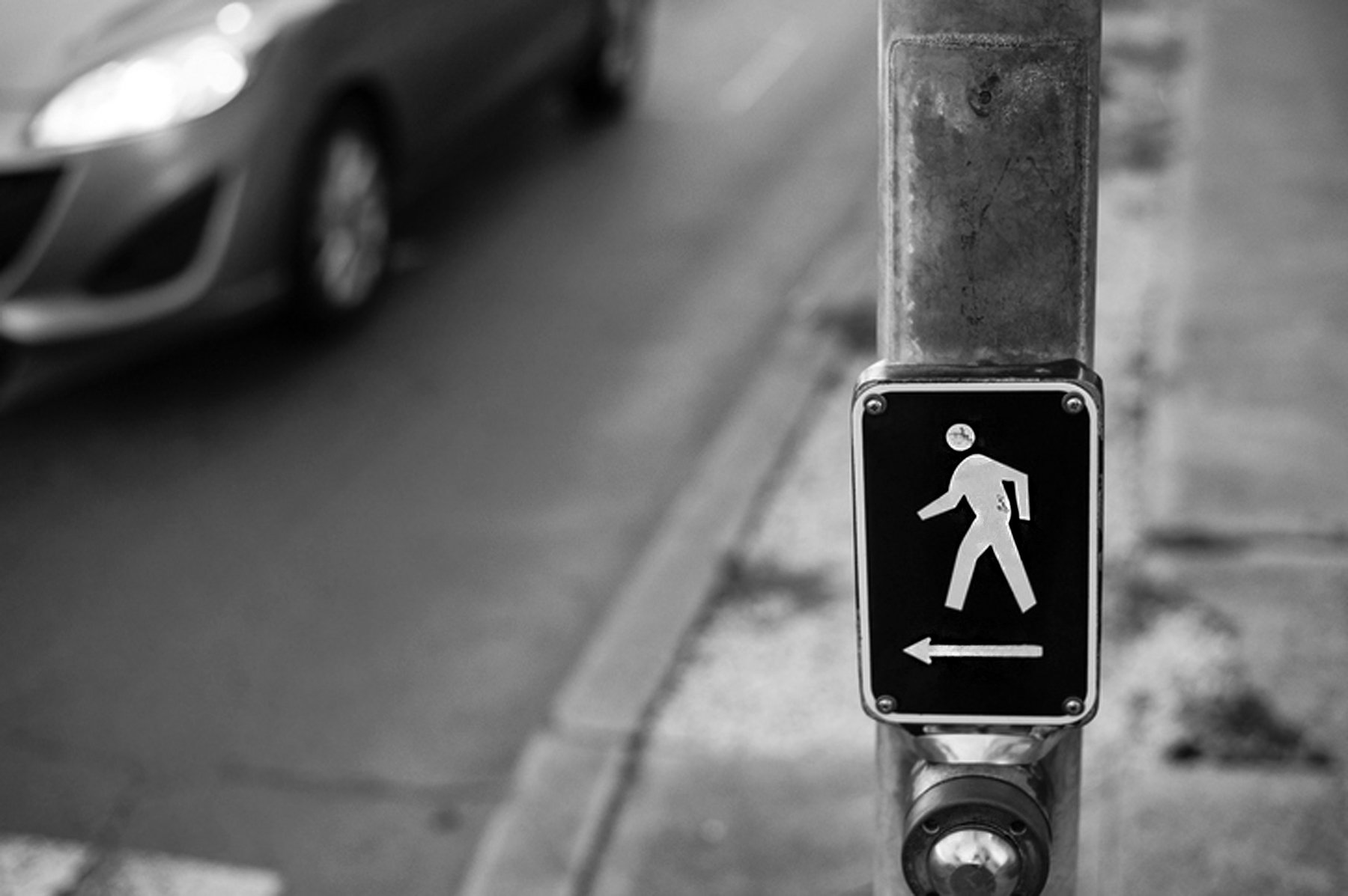A dangerous place to be in Los Angeles
I don't drive, though I grew up and still live in suburban Los Angeles. I don't drive because of the effects of glaucoma and keratoconus on my eyesight and the loss of effective vision in my right eye. If I could, of course I would drive. The swoop of a freeway onramp and the intoxication of momentum are this city’s birthright.
I’m not part of the Los Angeles that drives. I’m the part that’s driven.
When I tell people in Los Angeles that I don't drive, they express mild surprise. Some assume that my non-driving is an environmental statement. When I tell them I don't drive because I don't see well, they become skeptical. Few Angelenos can imagine that an otherwise fit-looking, middle-class male would not drive, however marginal his vision.
Drivers are uneasy with my claim of disability. Maybe they think it's something they’d prefer not to hear that keeps me from driving.
Instead, I talk briefly about taking the bus. They’re uninterested. I'm describing habits drivers have no intention of ever acquiring. They imagine a future in which they will always be drivers. They think they will always be in control, if only of a car.
I'm lucky those drivers have been so willing to tax themselves for the past 40 years to expand a transit system few of them will use. I'm luckier still that I can be in the company of bus riders far from my home with no certain way back, trusting their knowledge of the route they'll willingly share.
Instead of driving a car, I get lifts from friends. I'm a good passenger. I don't reflexively apply a phantom brake if the driver doesn't respond fast enough to slowing traffic. I don't presume to know the directions to where we're going. I don't question the driver's choice of lane, speed or off ramp. I don't ask to have the radio or air conditioning on or off.
■ ■ ■
Like Ray Bradbury—who was a Los Angeles non-driver—I've been stopped by a patrol car on a completely empty stretch of suburban sidewalk, at midday, dressed in a coat and tie, and ordered to identify myself and explain my destination. As a pedestrian, I’m a suspect.
I’m a good pedestrian however, staying within the marked crosswalks and never jaywalking, even when the next crosswalk is a long walk away. Free-range pedestrianism is dangerous, Anti-war activist Jerry Rubin was struck and killed in 1994 while attempting to cut across Wilshire Boulevard in Westwood. The head of the Los Angeles teachers’ union, crossing the seven lanes of Olympic Boulevard, was killed.
Fewer streets are marked by crosswalks today. The city has sandblasted away hundreds since the mid-1970s when traffic engineers showed, not surprisingly, that more pedestrians are killed in crosswalks than out of them. The engineers said the painted lines gave pedestrians a false sense of security, making them less attentive to danger. Risk managers had another reason to eliminate crosswalks. Their presence makes cities vulnerable if the city is sued by injured pedestrians or their survivors.
Using a crosswalk has other risks. In 2010, a Swedish hip-hop artist punched, kicked and drove over the body of a pedestrian, killing him, because the pedestrian had asserted his right-of-way in a crosswalk.
■ ■ ■
Seen from curbside, driving looks like a pathology—a syndrome of sudden tics, cognitive agnosias and kinetic preservations.
A driver preparing to turn right on red swivels his head to the left when he's a hundred feet from the intersection. He fixes his gaze on the flow of oncoming traffic. He barely slows until his bumper reaches the leading edge of the crosswalk, his head still rotated 75 degrees to the left. If there’s a break in traffic, he continues his turn before he, for the first time, sees preparing to cross as the traffic light turns green.
I've been watching him, because traffic safety trainers tell pedestrians to stare at drivers who've turned away during a right turn maneuver. The theory is that human beings are quick to sense when someone is staring at them—a common primate threat behavior—and a driver who's stared at will react unconsciously as if the pedestrian is real. My belief that staring actually works is my only protection.
Though I've not yet stepped off the curb, some drivers slam on their brakes when our eyes finally meet. The rear of the car humps slightly while some of the slack goes out of the driver's shoulder belt. Other drivers will swerve as they complete their turn through the intersection, their eyes averted from mine.
My gaze got under the driver's second skin. I've brought the sidewalk inside his car, and he, in momentary discomfort, recognizes what I am. I rarely make out the driver's expression but sometimes I see a face that shows irritation and occasional anger.
The driver making the turn is alone. His windows are rolled up; the air conditioning and radio are on. He's cocooned inside, but he's also extended a phantom skin to the surface of his car. A neurologist would say that the driver has enlarged his proprioception—the background sense we have of how we're oriented in space and where self leaves off and not-self begins.
If a driver should ding his car in the parking lot or thump the roof going under a low branch, his expanded proprioception will make him wince as if his real skin, not the amplified surface of his car, were at risk.
■ ■ ■
Even going nowhere, your car is the room you may not have had as a child. It's one of the few places in which you can be entirely alone by choice. Driving is performed in public, but it's a private act, removed from the spectacle of the street.
When I watch from the curb, drivers seem oblivious, wrapped in a second skin of high impact plastic and sheet metal edged in shining chrome. We who do not drive are equally remote from you who does. We’ll never know the concert of speed and solitude in which drivers commune.
We're the ones at the periphery of your gaze, standing in a cluster at the intersection where you've just turned right without even slowing. As you turn, the most anxious one among us, who had been peering into the oncoming traffic for a bus that's 20 minutes late, abruptly steps back from the curb, a bulging plastic bag digging a red band into the flesh across the back of the hand she had thrust through the bag’s handle. (That red line across a numbed hand is the pedestrian stigmata).
The most resigned one of us has been hanging back, leaning his left shoulder against anything (the light standard, the stucco wall of the strip mall, a struggling tree), his head down and hands jammed into the pockets of a drooping hoodie. As walkers in Los Angeles, we are in silent attendance on the traffic bunching and flowing in its minute-long pulse as the traffic lights change.
The preoccupied drivers automatically surrender to the momentum of driving. Trust passes from driver to driver in a wheel of cars. Not one of us at the curb observes with anything like the exaltation it deserves the arc of turning cars, as lovely and orderly as the advancing line of dancers in a corps de ballet.


